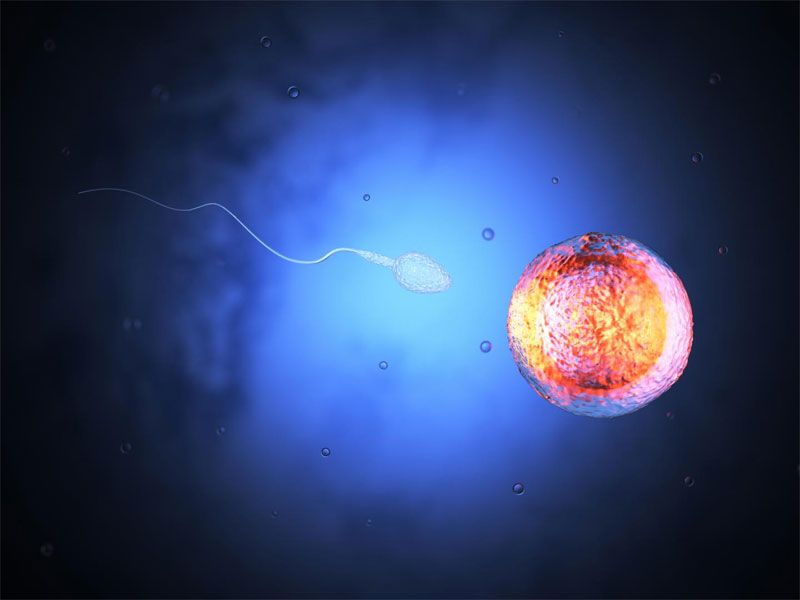Heavy Lifting at Work Linked to Decreased Fertility in Women

Heavy lifting at work may take a toll on women's fertility, a new study suggests.
In the study, which involved women undergoing fertility treatment, lifting or moving heavy things at work was linked with a reduction in biological markers of fertility. Similar links with decreased fertility were found in night-shift workers, the researchers added.
"Our study suggests that women who are planning pregnancy should be cognizant of the potential negative impacts that non-day shift and heavy lifting could have on their reproductive health," study co-author Lidia Mínguez-Alarcón, a research fellow in the Department of Environmental Health at the Harvard T.H. Chan School of Public Health in Boston, said in a statement.
However, the researchers noted that because their study included only women seeking fertility treatments, it's not clear whether the findings apply to women attempting to conceive without medical assistance. [Conception Misconceptions: 7 Fertility Myths Debunked]
Previous studies have found links between certain aspects of a person's job and fertility problems. For example, a 2015 study found a link between heavy lifting at work and irregular menstrual cycles, and a 2013 study found a link between night-shift work and an increased risk of miscarriage. Another study, published in 2015, found that female nurses who frequently lifted heavy loads at work took longer to become pregnant when they were trying to conceive, compared with women who never lifted heavy loads at work.
However, none of these earlier studies examined biological markers of fertility.
In the new study, the researchers analyzed information from nearly 500 women ages 18 to 45 (average age 35) seeking fertility treatment at Massachusetts General Hospital from 2004 to 2015. The participants were surveyed about their work schedules and the physical demands of their jobs. The researchers then assessed several biological markers of fertility, including the number of so-called antral follicles, which are small structures in the ovary that can be used to estimate the number of immature eggs remaining in a woman's ovaries. The researchers also looked at the number of mature eggs the ovaries produced in response to stimulation with medications (which was a part of the fertility treatment).
Sign up for the Live Science daily newsletter now
Get the world’s most fascinating discoveries delivered straight to your inbox.
On average, the women in the study had about 12 antral follicles in their ovaries, and nine mature eggs after treatment with fertility medications.
But the women who reported lifting or moving heavy objects at work had 14 percent fewer mature eggs, and 5 percent fewer antral follicles, compared with the women who reported having never lifted or moved heavy objects at work.
In addition, the women who reported working night or evening shifts had 24 percent fewer mature eggs, compared with the women who reported working day shifts only.
"These findings have clinical implications, as women with fewer mature oocytes [eggs would have fewer eggs which are capable of developing into healthy embryos," the researchers wrote in the Feb. 7 issue of the journal Occupational and Environmental Medicine.
Exactly how heavy lifting could affect a woman's egg production and egg quality is not known, the researchers said.
Night-shift work may disrupt circadian rhythms, or the body's internal clock, which could explain the link between this type of work and lower egg yields, the researchers said.
The study took into account some factors that could affect women's fertility, including their age, body mass index and education level. But it's possible that there are other factors not addressed in the current study that could explain some of the results, the researchers noted. For example, the study wasn't able to take into account all of the aspects of the women's jobs that might impact their fertility (such as stress levels or exposures to certain chemicals).
More work is also needed to determine whether avoiding heavy lifting and night shifts could improve fertility, the researchers said.
Original article on Live Science.

Rachael is a Live Science contributor, and was a former channel editor and senior writer for Live Science between 2010 and 2022. She has a master's degree in journalism from New York University's Science, Health and Environmental Reporting Program. She also holds a B.S. in molecular biology and an M.S. in biology from the University of California, San Diego. Her work has appeared in Scienceline, The Washington Post and Scientific American.

'Love hormone' oxytocin can pause pregnancy, animal study finds

'Mini placentas' in a dish reveal key gene for pregnancy









